- Home
- Mack Reynolds
Equality: In the Year 2000 jw-2 Page 9
Equality: In the Year 2000 jw-2 Read online
Page 9
Julian looked about him. “I thought you lived in a town. Hopewell, or whatever you call it.”
“This is Hopewell.”
“Are you joking?” He looked out over the rolling hills with their numerous trees and other vegetation. But then, to his surprise, he could make out an occasional glint, as of sun on a window, and realized that a good deal of the vegetation was too neat to be simply virgin countryside such as they had been driving through for the past half hour.
Edith, really amused now, turned down a narrow side road, went around a hill, and drove into a small garage.
“Home again,” she said, getting out.
He followed her, not having the vaguest idea what was to come. They emerged into a patio, sunk perhaps some twenty feet beneath ground level. Looking up, he could see trees, bushes, flowers, and grass, on what could only be called the roof of the building. Various rooms opened off the patio, all many-windowed in order to take advantage of the sunlight.
Edith led the way. “This is the living room.”
It was a large room, possibly twice the size of that in the Leete apartment. The far side consisted mainly of a window under a cantilever, which was also covered with vegetation. Julian looked out over the wooded valley. If there were other houses of this type in the vicinity, he couldn’t see them.
With mounting amazement, he took in the furniture, the art work. It was a comfortable, well-lived-in room. He asked, “Is this whole building underground?”
Edith went over to the auto-bar. “Beer? I’m thirsty from our drive. Yes, all the houses in Hopewell are underground. In fact, so are most of the houses in United America. We leave the surface for plant life, for wild animal life. For nature in general.”
He flopped down in one of the chairs, looking as bewildered as he felt.
She laughed again, without ridicule, and handed him a glass of beer.
But then the small frown he loved so much brought two light wrinkles to her forehead. “Surely you must have had some underground buildings back in the middle of the last century.”
“We might have had a few—parking lots and so forth. But as far as homes are concerned, offhand all I can remember are some caves in Southern Spain that the gypsies used to live in. Come to think of it, they were amazingly comfortable. They held flamenco dances in them for the tourists.”
“I think Father still has an old brochure by Malcolm B. Wells. I suppose you’ve heard of him?”
“I don’t think so.”
“It’s possible he’s still alive. I guess he was pushing fifty when you went into stasis. He was one of the most progressive architects of your time. Now let me see…” She went over to one of the bookcases and began searching. “Father keeps quite a few old books. He likes to mark them up with notes.”
“I thought you had to do all of your reading on the Library Booster Screen.”
“Oh, no. Any book in the data banks can be printed up at a very low credit charge and delivered to you. Here we are.”
She reached up and selected a rather well-worn brochure, which she handed to him.
“Read this while I activate the house and get a few things done.”
“Activate the house?”
“We turn it off when no one is in residence. And we’ll be wanting to eat and so forth. Besides, it’s a little musty; no one has been here for several months. We’ve all been caught up in your revival and your first few weeks in this century.”
Julian took a deep slug of his beer and began to read.
UNDERGROUND ARCHITECTURE
I can just picture some smelly old bastard, club in hand, the conventional caveman of the comic strips, a prototype Fred Flintstone, surprised at seeing a cave for the first time in his life. It must not have been very many minutes later that the idea of underground architecture was born.
That was perhaps a million years ago, long before modern man, as we know him, evolved. Since that time, of course, man has not exactly been standing still. Not only has he invented war and bigotry (and the religions to excuse them), and learned how to lay continents bare and to overbreed himself, but he has also invented or discovered many, many kinds of shelter other than the cave. Still, architecture —really great architecture —remains, as it began, an earth art; an expression, fashioned in the earth’s own materials, of the particular culture in which the man-architect lives. And despite great advances in the techniques of building above ground, man has never completely abandoned underground construction. Fossilized remains from every age, from every continent, prove that man has continued to avail himself of this most ancient of architectures.
Now, though, suddenly, for the first time, in this Twentieth Century, in the face of unchecked population growth, all earth-life faces the prospect of extinction because of man’s too rapid successes. He has at last begun to crowd himself from the surface of the planet. But now, too, for the first time, he has both the awareness and the ability needed to undo some of the earth-damage he has done. Faced with the problems of air and water pollution, water shortages, desperate overcrowding, a disappearing countryside, exhausted soils, and vast famines, man is forced to reappraise many long unquestioned ideas about his relation to the life-giving earth.
Out of this reappraisal whole new professions are evolving. Today, the growing importance of city planning, demography, soil, water, and wildlife conservation, and the overall science of ecology attest to man’s new awareness of the land crisis and his disappearing natural heritage.
Underground architecture for the purpose of conservation is but one expression of this new land ethic. Buildings already planned for construction in many parts of the United States will use the new practice of re-establishing balanced, natural-type soils above a man-made structure. Then, plant materials selected for both natural beauty and appropriateness to their region will be established on the roofs of the structures so that in the shortest possible number of years, thriving little biotic communities requiring no human maintenance will start to reappear. Future forests.
Underground architecture, though but one of many far-reaching conservation practices, promises measurable relief in many areas. In the Cherry Hill (Greater Philadelphia) area, for instance, a forty-five-inch annual rainfall amounts to over one million gallons of rainfall per acre each year. Obviously, then, for each acre made impervious by conventional construction (blacktop and roofing materials), over one million gallons of life-giving rain water are wasted each year, sent coursing down streams never intended to accommodate such surges, eroding banks, destroying plants and animal habitats, and finally carrying to the ocean rich topsoils, mineral nutrients, and bacteria that were built up on the land during those long centuries before modern man learned to pave. Underground architecture can prevent such damage by keeping its paved surfaces hidden from the rain. With a young forest to catch it, most of the rainfall on such structures will be held by the foliage and the deep humus layers, some of the water to be used by the plants and animals on the site, and the rest piped directly to the underground reserves now being robbed by conventional construction practices. But not all underground structures need have forests above them. In the West, where drier conditions prevail, hardy natural grasses and wildflowers can adorn such buildings just as they once adorned the prairies themselves. Parks, farms, meadows, and recreational areas can be established above these new buildings. A shopping center designed for the Philadelphia area, for instance, will have an 18-hole golf course above its skylighted stores and parking lots.
Further, underground architecture offers us many immediate, practical advantages. Because of the earth’s rather constant fifty-five-degree underground temperature (measurable in caves throughout the world), very little heating and even less air conditioning will be required in such buildings. This, plus almost no need for outside maintenance, snow removal, or lawn sprinklers, add up to considerable savings. In addition such intangibles as isolation from both outside noises and atmospheric radioactivity offer further incentives to build
this way. The prospect that we may once more find the great green out-of-doors at our doorsteps makes hoped-for increases in leisure time seem even more appealing.
But the words “underground architecture” often tend to repel the people who hear them. Having been exposed too many times to the depressing look of our subways and highway tunnels, or to leaky basements and cold, damp caves, people tend to view the real advantages of this new architecture with great skepticism. Most people will agree that such land-wasters as parking lots could go below ground. And many will even concede that some of our freeways, shopping centers —even our factories and offices —belong there too (in addition to railroad yards, refineries, and museums). But the thought of living underground in a windowless, artificial environment is to them the ultimate perversion of man’s role on earth.
Man, they say, was meant to live in the sun and air, to be involved in the seasons, to know night and day. Fortunately, most advocates of this new architecture heartily agree.
When architects propose windowless, wholly underground buildings, they are not planning housing.
Wonderful underground houses have been designed that always open onto sunny, sunken courtyards or project from the sides of hills in order that their rooms can be adequately day-lighted. Such underground buildings will be perfectly dry, and by natural methods will tend to keep the humidity level in the healthful forty to fifty percent range.
Whether or not underground architecture will ever be applied to the downtown areas of our large cities, the fact remains that it has definite application everywhere else. It offers hope that the great, blighted areas around our cities and along our highways may someday become green and beautiful again.
But underground architecture is no cure-all. It is only one way—one legitimate way —of bowing to the great life cycle we’re so quickly destroying. Though it has been endorsed by many ecologists and landscape architects, the idea has drawn fire from some who misunderstand it, who fear that it will result in a kind of non-architecture. Regardless, the idea is gaining in popularity each day as more and more people begin to wonder about the blight they see all around them.
Until now, man has always gone underground only for selfish reasons —security, bomb-proofing, or the novelty of dialing his own lighting and “weather” effects. If he continues to build for such reasons he may well create underground structures as ugly and as destructive as those above ground, but if he can find a new respect for the miracle of life—for all of the myraid life forms to which he is related-he may produce an architecture that his descendants will treasure …
Edith returned when he was barely halfway through, but took a chair and remained silent, sipping her beer.
He looked up finally and gestured with the pamphlet. “I don’t know. I suppose it makes sense. It just comes as a surprise. How many houses are there like this in Hopewell?”
“Several hundred, I would imagine.”
“But where are your stores, your community buildings, your car pool? Or bars, restaurants? And don’t you have any sports facilities in a town this big? Swimming pool, tennis courts?”
“They’re all underground too, built into the hillsides, sunk below the surface. To the extent possible, we try to avoid any view of man’s work. This is the manner in which most people live in America now. In small communities, in areas of beauty, but where modern agriculture isn’t very practical. Oh, we have fruit orchards here and there, and the machines come out at night and tend them and harvest them in season; but basically this is residential area.”
He shook his head. “I’ll have another drink. A stiffer one this time,” he said, coming to his feet.
Chapter Nine
The Year 2, New Calendar
It is manifest that a doubling of the world’s population in a generation has monstrously distorted traditional patterns. It is manifest that technology is at the bottom of it, specifically modern medicine. All Humanity is affected… The goal of the birth control movement is a balanced society where man and his environment are in reasonable equilibrium, where children are wanted and cared for… if a given society desires… modern medicine and a low death rate, it must limit its birth rate.
—Stuart Chase, The Most Probable World
Edith showed him the house in detail and Julian was properly impressed.
He asked, “Down here, away from the elements, how long would you expect a house like this to last?”
The question had evidently never occurred to her. “Why, I would think forever, given no serious earthquakes—or something unlikely such as being hit by a good-sized meteor. And always assuming, of course, that social change doesn’t bring us to a new politico-economic system that involves the stupidity of wars.”
“Knock on wood,” her guest muttered.
She said, “You know, in my archaeological studies the other day I was reading about some excavations in Mesopotamia, near Ur. They found a tomb constructed and furnished like a house. Everything was still perfect; in that dry climate not a thing had deteriorated. The walls were made of adobe brick, and so were the floors. The floors had been treated with ox blood and milk, evidently over and over again, so that they were as hard as linoleum, and they had retained their beautiful deep red sheen down through the thousands of years. It seems that underground houses, made with natural materials, can last forever.”
“Natural materials?”
“Actually, building materials have come a long way in the past third of a century. Beginning with spin-offs from the space program experiments, our scientists and technicians took off in all directions. For instance, the glass in this house is shatterproof, bullet-proof, and all but indestructible. I’m not up on the subject, but you can investigate it when we get back to the university, if you wish. Let’s eat, Jule. I’m starved.”
They went into the dining room. Julian said, “You name it. I have yet to have a dish in this era that wasn’t delicious.”
“How about a mixed grill of liver, kidney, and heart?”
“Sounds good.”
Edith dialed and while they waited she said, “Now, cooking is something I know a little about, since mother is such a buff. It’s become a fine art. In the past, almost everyone had food prejudices, often inherited from their parents since most cooking was done in the home. ‘I’m a meat and potatoes man,’ was a proud boast, when it should have been something to be ashamed of. There was precious little variety in most restaurant menus. From coast to coast you would find practically identical fare, and there was a sandwich stand on just about every corner. Now we teach the young people to be gourmets from earliest childhood.”
Julian laughed ruefully. “I too have my food prejudices. I could never stand either spinach or squash!”
The center of the table dropped, to return with their meal. Edith had ordered salad, vegetables, and a bottle of claret to go with the grill.
He shook his head. “I can’t get used to the idea of this meat being factory raised.”
“It makes sense,” she said. “Raising beef, pork, even chickens in the old manner was terribly inefficient, and practically impossible to automate very much. Take a country like India. In your day, they had hundreds of millions of cows. Can you imagine how much food had to go into each of them each year? And most of the Indians wouldn’t even eat beef for religious reasons. Humans starved, while cattle ate half the agricultural products of the country.”
Julian said, “And now it’s all raised in what amounts to oversized test tubes, in which the necessary nutrients are piped in to continue the life and growth of the various meats. But you still have to have agricultural products to nourish this living—but not really living—flesh.”
“Yes, but much less than when we raised the whole animal. In the factory vats, where the meat grows, there are no bones, no skin, no waste at all. We grow only the parts of the animal we wish to use. Sir, this is a grim subject to discuss while eating.”
Julian agreed. “All right. Here’s something else I wanted
to ask you about. When you were kidding me about renting houses rather than owning them, you mentioned the fact that first we had a baby, and then since my—my girl and I were genetically ideal we were given permission to have a second child. That floors me. You mean you have to be genetically checked out before you can have children these days? We wouldn’t have stood for that in my time.”
“I worded that poorly,” she admitted. “There is no law involving such things, but there have been considerable advances in genetics in the past quarter of a century. As a consequence, from earliest youth we are taught how important it is not to have children by someone whose genes are such that the child might be affected adversely. So it is that practically any couple considering children will have themselves throughly checked out.”
“Even if a couple were told that a child of theirs would be a Mongolian idiot, they could go ahead if they wished?”
“Yes. You can see how extremely unlikely that would be, but there is no law against it. We’ve eliminated laws having to do with individual actions that don’t harm anyone else. If you want to read pornography you can do so until your eyes drop out. If you want to take dope until you’re so far around the bend that you have to be hospitalized, go ahead—just so long as you don’t harm someone else. If you’re a homosexual, have the time of your life—but make sure your partner is a consenting adult.”
“So that genetic thing is voluntary.”
“That’s right.”
Julian took another sip of his wine. “What’s happened to the population explosion? What’s the population now? What is it in India, for heaven’s sake?”

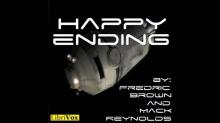 Happy Ending
Happy Ending Space Visitor
Space Visitor A Kiss Before Loving
A Kiss Before Loving Episode on the Riviera
Episode on the Riviera Planetary Agent X
Planetary Agent X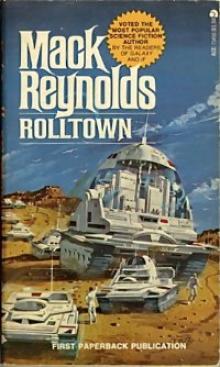 Rolltown bh-3
Rolltown bh-3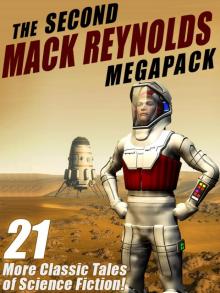 The Second Mack Reynolds Megapack
The Second Mack Reynolds Megapack Dawnman Planet up-2
Dawnman Planet up-2 Pacifist
Pacifist The Other Time
The Other Time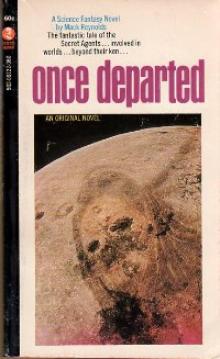 Once Departed
Once Departed IQ
IQ Computer War
Computer War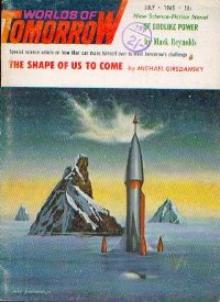 Earth Unaware
Earth Unaware The Rival Rigelians up-3
The Rival Rigelians up-3 Brain World up-7
Brain World up-7 Star Trek - TOS - Mission to Horatius
Star Trek - TOS - Mission to Horatius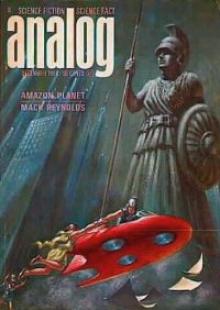 Amazon Planet up-5
Amazon Planet up-5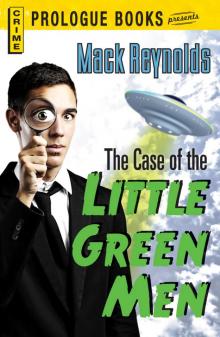 The Case of the Little Green Men
The Case of the Little Green Men Other Time
Other Time The Mack Reynolds Megapack
The Mack Reynolds Megapack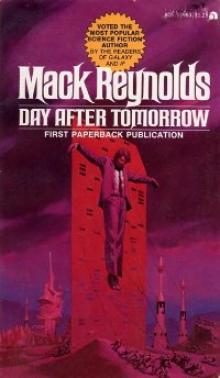 Day After Tomorrow
Day After Tomorrow The Devils & Demons MEGAPACK ®: 25 Modern and Classic Tales
The Devils & Demons MEGAPACK ®: 25 Modern and Classic Tales Mission to Horatius
Mission to Horatius Ability Quotient
Ability Quotient Galactic Medal of Honor
Galactic Medal of Honor Trojan Orbit
Trojan Orbit Code Duello up-4
Code Duello up-4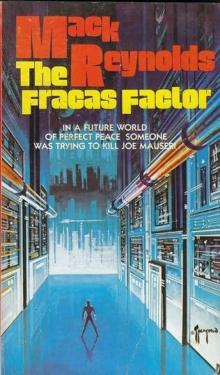 The Fracas Factor
The Fracas Factor The Second Pulp Crime
The Second Pulp Crime Deathwish World
Deathwish World Planetary Agent X up-1
Planetary Agent X up-1 Blackman' Burden na-1
Blackman' Burden na-1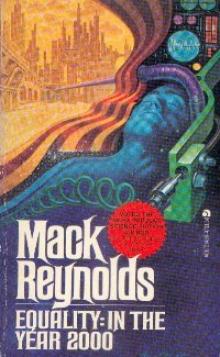 Equality: In the Year 2000 jw-2
Equality: In the Year 2000 jw-2 The Best Ye Breed na-3
The Best Ye Breed na-3 The Jet Set
The Jet Set The Rival Rigelians
The Rival Rigelians The Space Barbarians
The Space Barbarians